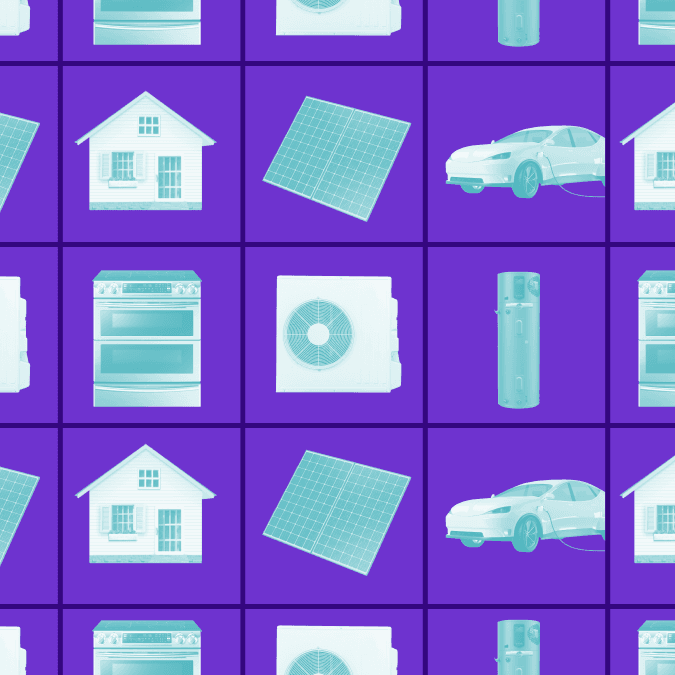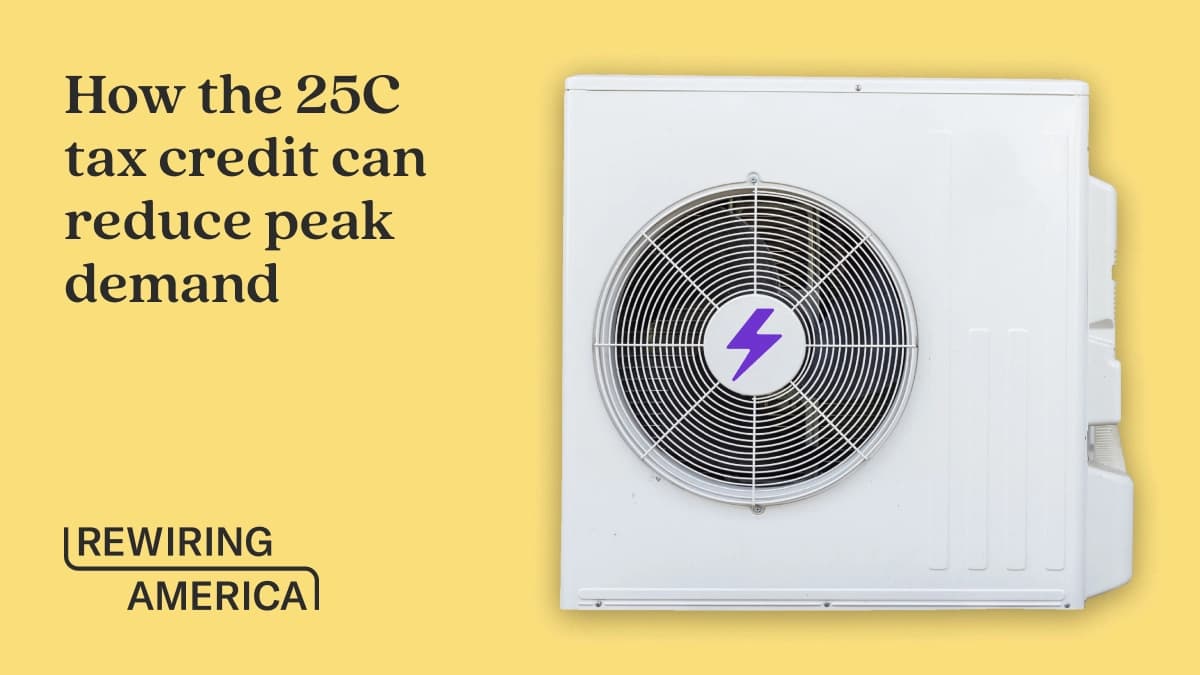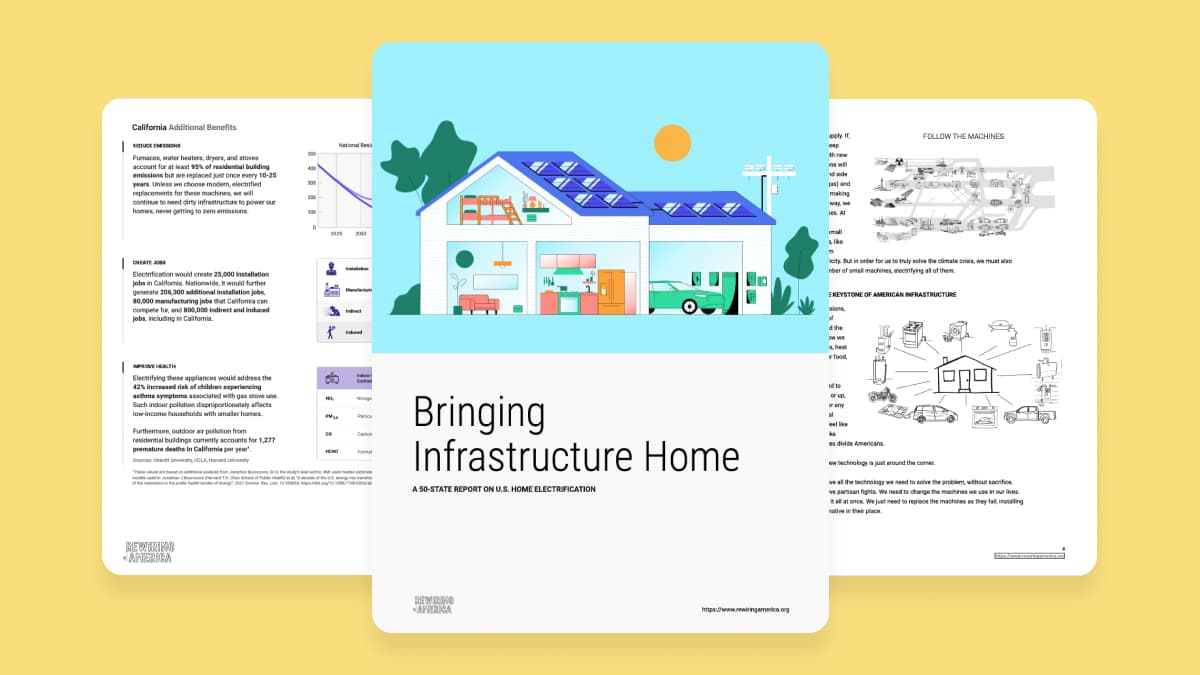Addressing climate change requires a rapid transition from fossil fuels to renewable electricity sources and converting our appliances and vehicles to run on clean electricity. However, the increased use of variable renewable power alongside growing demands from electric machines will present challenges if we attempt to fit a clean electric future into outdated paradigms. Embracing a dynamic system and refining our ability to manage both the supply and demand sides of the grid can enable us to transition our homes, businesses, and vehicles to superior technologies, creating a dependable, clean, and cost-effective grid.
Electrifying everything—from cars to furnaces to cooktops—will create more demand for electricity and introduce new patterns of demand. At the same time, producing more power from solar and wind will change the patterns of electricity generation.
If utilities and regulators respond to rising demand by constructing costly new infrastructure and raising rates, electrification could become too expensive for many customers, short-circuiting our clean energy future. On the other hand, if they enlist the new electric machines in helping to manage the grid at lowest cost, that could create downward pressure on rates, perpetuating a virtuous cycle towards clean electricity and electric machines.
Areas of opportunity for building the grid of the future at the lowest cost
Rate Design
Regulators typically set electricity rates at the level that ensures customer payments will equal the utility’s revenue requirement. The revenue requirement is the utility’s investments in infrastructure multiplied by a percentage rate of return, plus operating costs. Investor owned utilities are under pressure to return a profit to shareholders. Because they earn a guaranteed rate of return on infrastructure investments, their path to higher profits is through building expensive infrastructure—such as transmission and distribution poles and wires in their own territory. They are not incentivized to invest in lower-cost, more efficient solutions like load flexibility or non-wires alternatives because they don’t earn as big of a return on those investments.
The most transformative solution to this challenge is to align utility incentives with societal goals, as in Performance-Based Regulation models, where utilities earn returns based on how effectively they deliver electricity to customers. Partial solutions, such as time-of-use rates, can reduce system costs by shifting demand to make use of low-cost resources. By incentivizing customers to use power when abundant and cheap renewables are available and to shift their usage outside of expensive peak periods, regulators can reduce the need for expensive new infrastructure.
Grid Upgrades
Even if utilities enlist electric machines in managing the grid at lowest cost, a significant buildout of new power generation, transmission, and distribution infrastructure will be required to meet the needs of an electrified future. Currently, buildout of new transmission infrastructure is slow and resource-intensive, creating long interconnection queues that prevent new solar and wind from being added to the grid. While waiting for other regulatory bodies to streamline the permitting and construction of new transmission infrastructure, utilities and regulators can get more out of the grid that we currently have. One example of this is dynamic line ratings, which account for local weather conditions when determining how much power can flow through a line: on a windier or cooler day, the line can accommodate more power since heat gets dissipated more quickly. Utilities and regulators could also engage in longer-range planning of both the transmission and the distribution grid to find lowest-cost solutions for the future.
Virtual Power Plants
A Virtual Power Plant (VPP) is a collection of electric machines that can all be centrally controlled to reduce load during peak periods. VPPs can include smart thermostats, EV chargers, water heaters, and home battery systems. VPPs can fill the role of a “peaker plant” on the grid, which is an expensive (and often dirty) form of power generation that only runs a few times a year on the days with the highest demand. Peaker plants can access lucrative “capacity payments” just for being available to the grid. VPPs can meet those peak loads more inexpensively and cleanly, so regulators should allow VPPs to access those same capacity payments. Other opportunities for VPPs include standardizing device control so it’s easier for a VPP aggregator to communicate with a collection of machines, and including VPPs in grid planning.



